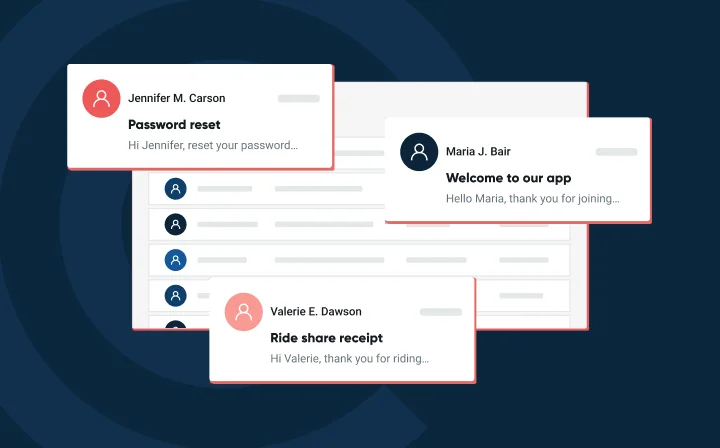What is an email MTA? A guide to mail transfer agents


Think of the MTA as a version of Gandalf – not the one yelling “You shall not pass!” but the one calmly guiding your messages through the wilds of the internet, making sure they follow the right protocols to reach their destination.
That’s why understanding how MTAs fit into the email delivery chain is so important – whether you’re scaling workflows at a startup or fine-tuning deliverability for an enterprise platform. Get the infrastructure right, and your messages land where they should. Get it wrong, and you’re left wondering why half your emails vanish into the void.
In this guide, we’ll cover everything from the MTA basics to advanced strategies for building modern email infrastructure. Plus, we’ll give you actionable tips and Mailgun-specific solutions for developers and technical decision-makers alike.
An MTA (Mail Transfer Agent) is a core service that sends, receives, and relays email between servers using the SMTP protocol. An MTA receives messages from another MTA or from a Mail User Agent (MUA) – which is an application that enables users to send, receive, and manage email, typically through an interface like a desktop client or webmail.
Once an MUA relays an email to an MTA, the MTA takes over and sends it to the receiving MTA via SMTP. If the sender seems spammy, inbox service providers (ISPs) will restrict the email delivery, potentially impacting the brand’s deliverability.
Imagine your email like a parcel. Your email server is like the post office, and an MTA is like your app’s personal postmaster general. It receives your outgoing mail, stamps it with the right headers, routes it through a maze of servers, and hands it off to the destination MTA using SMTP. From there, the message is passed to a Mail Delivery Agent (MDA), which places it in the recipient’s inbox.
If you’re picturing a little daemon in a server rack wearing a courier cap, you’re not far off.
MTAs are responsible for:
This makes the MTA the glue between application logic and successful email transmission.
Once your app hands off email messages to the MTA, they enter a mail queue. Messages deliveries are attempted by the MTA and retried intelligently based on priority and response codes.
It’s like sending a Slack DM to someone with Do Not Disturb enabled – you don’t just give up, you try again later, respectfully.
Many MTAs also work in tandem with a Mail Submission Agent (MSA), which authenticates outgoing messages, formats headers, and ensures only verified users can submit emails.
Here’s how MTAs fit into the larger email communication process:
If a recipient server gives a 4xx code (temporary issue), the MTA waits and tries again. A 5xx code (permanent failure) means the message is marked as bounced and discarded.
When the MTA has processed an outgoing message, it typically passes the email off to a Mail Delivery Agent (MDA) via IMAP or POP protocols. This handoff finalizes the email delivery process.
Message transfer agents, mail transport agents, and mail submission agents all play unique roles in a robust email communication stack. The MTA focuses on routing, while the MSA ensures proper formatting and authentication, and the MDA delivers to the recipient’s mailbox.
MTAs directly influence deliverability – your ability to land in the inbox vs. the spam folder. Key configuration areas include:
If you’re seeing poor open rates or getting throttled by Gmail or Yahoo, your MTA is the first place to investigate.
Let’s clarify a common confusion: SMTP relays and MTAs are related – but not the same.
Here’s an analogy: if MTAs are the email delivery trucks, SMTP relays are the rental services. You can either own your own email truck and maintain it or use someone else’s fleet that already has delivery routes mapped out.
| Feature | MTA | SMTP Relay |
|---|---|---|
| Core function | Sends and receives emails | Forwards emails to external MTAs |
| Message storage | Can store and queue messages | Typically stateless |
| Deployment | On-premise or cloud | Cloud-based most often |
| Flexibility | High configurability | Easier for plug-and-play delivery |
| Use case | Full email infrastructure | External sending (e.g., third-party) |
In simple terms: All MTAs use SMTP—but not all SMTP relays are full MTAs.
Whether self-hosted or managed, your MTA should support:
Whether you’re sending transactional emails like onboarding flows, password resets, or shipping updates – or email marketing content, your email system depends on a well-configured MTA. From custom queueing logic to smart retries and warm-up flows, your MTA is either a silent powerhouse – or a silent failure point.